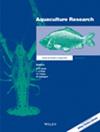Application of Organic Fertilizer to Increase the Productivity of Tiger Shrimp Rice Cultivation in Brackish Water Affected Land With the Coculture System
Abstract
Unproductive land affected by brackish water is a global challenge, particularly in aquaculture and agriculture; it has certain limitations that can hinder its use economically or ecologically, so it requires proper management to become more valuable and useful. This study evaluates the effectiveness of powdered and liquid organic fertilizers (LOFs) in a coculture system integrating rice and tiger shrimp cultivation on brackish water-affected land. The experiment was conducted on 12 pond plots, each measuring 560 cm2, with four treatments: (a) LOF; (b) powdered organic fertilizer (POF); (c) a combination of liquid and POFs (LPOFs); and (d) no fertilizer (NF). Observed parameters included rice plant growth, tiger shrimp growth and survival rates, and water quality, measured every 14 days. The findings revealed that the highest growth and survival rates of tiger shrimp (8.48 g/individual and 76%, respectively) were achieved with LPOF treatment. In comparison, the lowest growth and survival rates (4.84 g/individual and 37%) occurred without fertilizer. Tiger shrimp weight increased significantly over 70 days, from an initial average of 0.2–8.48 g/individual (LPOF) and 6.58 g/individual (NF); likewise, the rice plant grows well during 105 days of maintenance. Organic fertilizer applications proved beneficial for rice and shrimp, enhancing plankton growth and serving as a natural feed source for shrimp. This reciprocal relationship demonstrates the potential of organic fertilizers to boost productivity and sustainability in rice-shrimp coculture systems. This research offers valuable insights and practical strategies to overcome the challenges faced by tiger shrimp farmers in brackish water aquaculture.


 求助内容:
求助内容: 应助结果提醒方式:
应助结果提醒方式:


